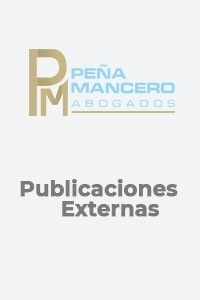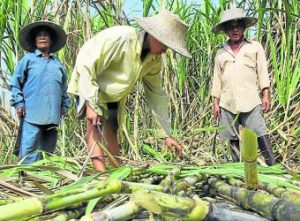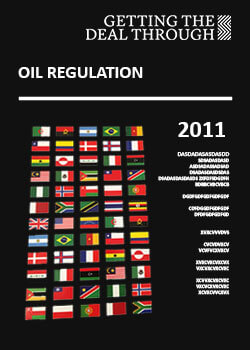Colombian competition agency to sanction sugar cartel

Gabriela Mancero
September 07 of 2015

An investigation started by the Superintendence of Industry and Commerce (SIC) three years ago against the sugar-producing associations and against the main sugar factories in Colombia has resulted in the recommendation to the Superintendent, on 29 May 2015, to sanction them for restrictive trade practices.
The investigation originally started due to claims presented before the SIC and the Ministry of Industry and Commerce regarding alleged production quotas, market distribution, price stability and reduced profitmargins for the sugar industry. One of the claims was filed by 130 manufacturers of a typical sweet containing guava and sugar, which is produced in the region of Vélez(Santander) and they were complaining about a heavy increase of 45 per cent on the price of sugar.
Likewise, officers from corporations such as Coca-Cola Femsa, Bavaria, Nestlé de Colombia, Bimbo, Nacional de Chocolates,Meals de Colombia and Casa Luker, among others, requested the competition authority to investigate if the Sugar Price Stabilisation Fund (FEPA, from its Spanish name),created by the government in 2000, was carrying out restrictive trade practices. They claimed that there was no reason to explain the constant increase in the product’s internal price as, while inflation increased by 3.7 per cent in Colombia between September 2008 and January 2010, in the same period the price of sugar had an increase of 51.4 per cent.
The investigation included 12 sugar producers, including Asocaña, the association of sugar factories, Dicsa, Ciamsa and 16 current and prior officers of the industry.This is an emblematic case as in the state of Valle del Cauca alone, this industry represents 17 per cent of the GDP and generates around 190,000 jobs.
Some of the corporations involved in the investigation are: Incauca; Manuelita; Riopaila Castilla; Mayagüez; Pichichí; San Carlos; Risaralda; Providencia; La Cabaña; Carmelita; and María Luisa.
The SIC’s sanctioning recommendation is based on the fact that, since 1999, the sugar factories and the industry’s associations setup a scheme to limit competition, to increase sugar prices and to restrict the offer of the product in the national market. Such a scheme resulted in an increase in their income and profits thus harming the companies that demand sugar as well as consumers.
Likewise, the SIC found that the investigated parties: (1) used public policy mechanisms such as FEPA to carry out activities to avoid using such an instrument;(2) shared sensitive information (prices,exports, production quotas, clients, among other things); and (3) designed strategies aimed at limiting sugar imports from other countries in order to avoid a decrease in the internal price.
According to the SIC’s report, through the board of directors of Dicsa and Ciamsa, the representatives of sugar factories who were members of such board may have created a strategy to restrict imports from Bolivia and to create artificial entry barriers through imports by the Buenaventura port. Likewise, the SIC found evidence about Asocaña’s role to authorise such imports when that association does not have any legal power to authorise or restrict sugar imports to Colombia.
Dicsa and Ciamsa are organisations originally created by the sugar producers to carry out sugar import and export procedures. But the SIC found that they were actually used to exchange confidential information that allowed sugar producers to coordinate their behaviour in an anticompetitive way.
For instance, as part of the evidence the SIC found that a meeting took place in Asocaña in 2009 – which was chaired by Luis Fernando Londoño Capurro, who presented to the members of the organisation a document called Activities’ Summary – whereby the sugar producers discussed their prices,the clients to whom they offered the products and their exports’ volumes.
The sugar industry has reacted to the investigation stating that there is no cartel and that they have been subject to political persecution. The case is still being heard and, based on the 350-page report issued by the Competition Division of the SIC, the Superintendent will have to issue a decision on whether to impose sanctions both on the corporations and/or on their officers.
This, together with another investigation into a rice cartel that recently resulted in sanctions imposed by the SIC, has opened the debate on whether agricultural policies are adequately protecting consumers and allowing for appropriate development of the Colombian rural region. The state’s efforts to create government agencies to stabilize prices of certain products such as sugar and rice have opened a window for alleged abuses and manipulation of prices. Sugar producers claim that they are just applying the prices fixed by FEPA and, therefore, they do not have any room for direct price fixing. The SIC on the other hand considers that FEPA has gone beyond its powers. Once the Superintendent decides, there will still be appeals and other legal mechanisms to avoid or delay the imposition of sanctions.
Regardless of the result, awareness of competition law and the government’s decision to attack anti-competitive behavior has been raised and broadly covered by the media, something that should be welcome by all parties involved.
Note:
1 SIC Resolutions No 5347, 13 February 2012 and No 15294, 8 April 2013.

The Constitutional Court of Colombia has declared constitutional the Agreement between the Government of the Republic of Colombia and the Government of the French Republic to avoid double taxation
CAUSE FOR DISOLUTION OF COMPANIES DUE TO NON-COMPLIANCE WITH THE HYPOTHESIS OF CONTINUING BUSINESS

